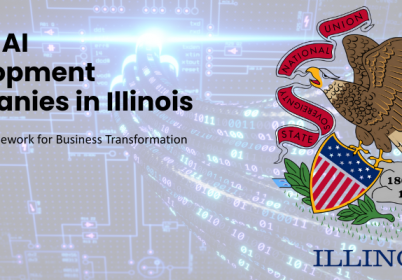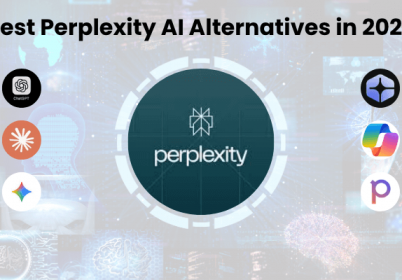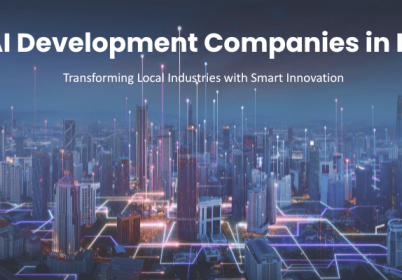How to Use Copilot AI | Implementation Guide

Table of Contents
Copilot AI represents a revolutionary shift in how we interact with technology across various professional environments. This intelligent assistant has rapidly gained popularity due to its ability to enhance productivity and streamline complex workflows. Learning how to use Copilot AI effectively can transform your daily tasks and boost efficiency in meaningful ways. Microsoft has developed specialized versions of Copilot AI for different applications, including GitHub Copilot for developers and Microsoft Copilot for Office applications. These AI assistants function as collaborative partners that complement human creativity rather than replace professional judgment. This comprehensive guide explores how to use Copilot AI across different platforms and provides practical strategies for maximizing its capabilities in your professional life.
Table of Contents
What is Copilot AI?
Copilot AI functions as an intelligent assistant that works alongside users to enhance productivity and creativity in various environments. This technology leverages advanced large language models to understand context and generate relevant suggestions in real time. The underlying architecture combines sophisticated machine learning algorithms with extensive training data to deliver contextually appropriate responses. Copilot integrates seamlessly into existing productivity tools and development environments without disrupting established workflows. The system continuously learns from interactions to provide increasingly relevant and personalized assistance over time.

Copilot operates by analyzing the current context within your application and anticipating your potential needs. When integrated into productivity suites like Microsoft 365, it can draft emails, summarize documents, and generate presentations based on minimal input. In development environments, Copilot suggests code snippets, completes functions, and explains complex code blocks to accelerate programming tasks. The technology adapts to your working style and adjusts its suggestions to align with your preferences and requirements.
Why Copilot is important?
Copilot AI represents a significant advancement in human-computer interaction by fundamentally changing how we approach daily tasks. Organizations implementing Copilot report productivity increases of up to 30% across various departments and functions. The technology democratizes access to AI capabilities without requiring specialized technical knowledge or extensive training periods. Employees can focus on higher-value creative and strategic work while Copilot handles routine and repetitive tasks.
Research indicates that knowledge workers spend approximately 60% of their time on administrative tasks rather than core responsibilities. Copilot addresses this inefficiency by automating document creation, data analysis, and information retrieval across multiple platforms. The economic impact extends beyond individual productivity to organizational agility and competitive advantage in rapidly evolving markets. Companies adopting AI assistants like Copilot demonstrate improved innovation rates and faster response to market changes.
Copilot also serves as an accessibility tool by providing alternative methods for interacting with complex software systems. Users with different abilities can leverage natural language instructions instead of navigating complex menu structures or keyboard shortcuts. The technology bridges skill gaps within organizations by making advanced features accessible to all team members regardless of technical proficiency. This democratization of capabilities creates more inclusive work environments and expands opportunities for contribution.
Popular Types of Copilot AI Tools
GitHub Copilot

GitHub Copilot serves as an AI pair programmer designed specifically for software development environments. This tool integrates with popular code editors including Visual Studio Code, Visual Studio, and JetBrains IDEs. Developers receive contextually relevant code suggestions based on comments, function names, and existing code patterns. The system supports multiple programming languages including Python, JavaScript, TypeScript, Ruby, Go, and many others.
Microsoft 365 Copilot
Microsoft 365 Copilot transforms productivity across the entire Microsoft application ecosystem through integrated AI assistance. In Word, it drafts documents, rewrites paragraphs, and summarizes lengthy content with remarkable contextual awareness. Excel users benefit from data analysis, formula generation, and pattern identification without requiring advanced spreadsheet knowledge. PowerPoint presentations come together rapidly as Copilot generates slides, suggests layouts, and creates visual elements from simple prompts.
Copilot in Windows
Windows Copilot integrates AI assistance directly into the operating system for system-wide productivity enhancement. Users can manage system settings, troubleshoot issues, and optimize performance through natural language commands. The tool provides contextual assistance for navigating complex system configurations without technical expertise. Windows Copilot also facilitates file management, application control, and system information retrieval through conversational interactions.
Industry-Specific Copilots
Industry-specific Copilot implementations serve various specialized fields:
- Healthcare organizations implement specialized solutions for medical documentation, patient data analysis, and treatment planning support
- Financial institutions leverage custom tools for risk assessment, regulatory compliance, and investment analysis
- Legal Copilot systems assist with contract analysis, case research, and document preparation
- Educational variants help create lesson plans, grade assignments, and provide personalized learning recommendations
How to Get Started with Copilot AI
Accessing Copilot Services
Begin your Copilot journey by identifying which version aligns with your specific professional needs and requirements. For Microsoft 365 Copilot, contact your organization administrator to confirm subscription status and access permissions. GitHub Copilot requires an active GitHub account and subscription to the Copilot service through their website. Download necessary extensions or plugins for your preferred development environment or productivity applications.
Installation and Setup
The setup process involves several key steps:
- Install the appropriate Copilot extension from your application’s marketplace or extension library
- Ensure Microsoft 365 applications are updated to the latest version supporting Copilot functionality
- Configure GitHub Copilot in IDE settings to optimize suggestion relevance and frequency
- Complete authentication steps to link Copilot services with your professional accounts and workspaces
Understanding the Interface
Familiarize yourself with Copilot’s presence indicators across different applications where it appears as a sidebar, inline suggestions, or dedicated pane. Learn to recognize when Copilot is active and processing your context through visual cues within your applications. Locate the prompt input areas where you can directly ask questions or request specific assistance. Understand how to accept, modify, or reject Copilot suggestions through keyboard shortcuts or interface buttons.
Initial Configuration
Customize Copilot settings to match your working style and preferences through application-specific configuration panels. Set your preferred suggestion frequency to balance helpfulness against potential distraction during focused work. Configure privacy settings according to your organizational requirements and personal comfort level. Establish any domain-specific terminology or references that will help Copilot provide more relevant assistance.
Key Use Cases of Copilot AI
- Content Creation and Editing: Copilot excels at drafting initial document versions based on simple prompts or outlines provided by users. Writers can request rewrites in different tones, styles, or complexity levels to match specific audience needs. The tool generates creative content including marketing copy, blog posts, and social media updates from minimal direction. Editors leverage Copilot to identify grammatical issues, suggest alternative phrasing, and ensure consistency throughout documents.
- Code Development and Debugging: Developers receive contextually relevant code suggestions that align with existing programming patterns and standards. Copilot can generate entire functions or classes based on descriptive comments explaining the desired functionality. The system explains complex code blocks through natural language descriptions that clarify purpose and operation. Debugging assistance identifies potential issues and suggests corrections based on common error patterns and best practices.
- Data Analysis and Visualization: Excel users can transform raw data into meaningful insights through natural language requests for specific analyses. Copilot generates appropriate formulas and functions without requiring users to remember complex syntax or parameters. The system creates visual representations including charts, graphs, and dashboards based on data characteristics and analysis goals. Users can request comparative analyses, trend identification, and statistical evaluations through conversational prompts.
- Email and Communication Management: Outlook users draft professional emails quickly by providing basic information about the desired message content. Copilot generates appropriate greetings, closings, and professional language based on recipient relationships and message context. The system summarizes lengthy email threads to extract key points and action items. Meeting participants receive AI-generated notes, action items, and follow-up tasks based on conversation transcripts.
- Presentation Development: PowerPoint users create professional presentations rapidly by describing desired content and presentation goals. Copilot generates slide structures, suggests appropriate layouts, and recommends visual elements for maximum impact. The system creates speaker notes, talking points, and audience engagement strategies based on presentation content. Users can request design improvements, visual consistency checks, and accessibility enhancements through simple prompts.
Tips to Use Copilot AI Effectively
Crafting Effective Prompts
For optimal results with Copilot, consider these prompt strategies:
- Structure requests with specific details about desired outcomes rather than vague instructions
- Include format preferences, tone requirements, and audience information for targeted responses
- Break complex requests into smaller, more manageable components that Copilot can address sequentially
- Refine prompts based on initial responses to guide Copilot toward your specific requirements
Reviewing and Editing Suggestions
Always review Copilot-generated content critically before accepting or implementing suggestions in professional contexts. Verify factual information, technical recommendations, and data interpretations against reliable sources when accuracy is crucial. Maintain your unique voice and perspective by editing generated content to align with your personal style. Consider Copilot suggestions as starting points rather than final products requiring your professional judgment.
Combining Human Expertise with AI
Leverage Copilot for routine aspects of tasks while focusing your expertise on strategic decisions and creative direction. Establish clear boundaries regarding which tasks you delegate to Copilot versus those requiring human judgment. Use Copilot to generate multiple approaches to problems before selecting and refining the most appropriate solution. Maintain awareness of your field’s ethical guidelines and professional standards when implementing AI suggestions.
Learning from Interactions
Pay attention to which types of prompts generate the most useful responses for your specific needs. Document effective prompt patterns and approaches for consistent results across similar tasks and projects. Share successful prompt strategies with colleagues to establish organizational best practices for Copilot usage. Recognize that Copilot improves its understanding of your preferences through continued interaction over time.
Benefits of Using Copilot AI

- Productivity Enhancement
Studies indicate that Copilot users complete routine tasks up to 70% faster than traditional manual methods. The technology eliminates repetitive elements of knowledge work including boilerplate text creation and standard code structures. Users report significant time savings when drafting documents, creating presentations, and analyzing data sets. Copilot reduces context switching by providing information and assistance within your current working environment.
- Creativity and Innovation Support
Copilot generates multiple approaches to problems, expanding the solution space beyond initial human concepts. The system suggests novel combinations of ideas and perspectives that might not occur through conventional thinking. Users report overcoming creative blocks by using Copilot to generate starting points for further development. The technology facilitates rapid prototyping of concepts across written, visual, and technical domains.
- Knowledge Accessibility
Copilot democratizes access to complex functions and features without requiring extensive training or documentation review. Users can leverage advanced capabilities through natural language requests rather than memorizing specific commands or procedures. The system bridges knowledge gaps by providing contextual guidance for unfamiliar tasks or applications. Technical information becomes more accessible through conversational interactions rather than specialized terminology.
- Consistency and Quality Improvement
Organizations maintain greater consistency in documentation, code, and communications through standardized AI assistance. Copilot helps enforce style guides, coding standards, and communication protocols across teams and departments. The system reduces common errors in routine tasks through pattern recognition and best practice implementation. Quality improvements emerge from combining human oversight with AI-powered attention to detail.
Limitations and Considerations
Accuracy and Reliability Concerns
Key limitations regarding Copilot’s accuracy include:
- Occasionally generates plausible-sounding but factually incorrect information requiring verification
- Technical suggestions may contain logical errors or security vulnerabilities despite appearing correct
- Performance varies across different domains and specialized knowledge areas
- Users must maintain critical evaluation rather than assuming all generated content is accurate
Privacy and Data Security
Organizations must consider how Copilot processes sensitive information and whether data leaves secure environments. Microsoft’s enterprise Copilot implementations include safeguards, but policies should address appropriate usage contexts. Users should avoid inputting confidential information, personal data, or proprietary content without understanding data handling practices. Clear guidelines help prevent accidental exposure of sensitive information through AI interactions.
Overreliance Risks
Excessive dependence on AI assistance may potentially erode core skills and critical thinking capabilities over time. Organizations should balance efficiency gains against the need to maintain fundamental competencies among team members. Educational contexts require special consideration regarding appropriate boundaries for AI assistance in learning environments. Developing healthy usage patterns prevents problematic dependency on automated solutions for tasks requiring judgment.
Ethical Considerations
Content generation raises questions about originality, attribution, and intellectual property in professional contexts. Organizations must establish clear policies regarding appropriate uses of AI-generated materials in different scenarios. Transparency about AI involvement in content creation maintains trust with clients, customers, and stakeholders. Bias monitoring ensures that automated systems do not perpetuate or amplify existing prejudices in communications.
Future of Copilot AI
The evolution of Copilot technology continues toward increasingly sophisticated multimodal capabilities across text, images, and data. Future versions will likely demonstrate enhanced contextual awareness of organizational knowledge and project history. Deeper integration between different Copilot implementations will create seamless experiences across application boundaries. Domain-specific training will improve performance in specialized fields including medicine, law, and engineering.
Real-time collaboration features will enable multiple team members to work with shared Copilot instances simultaneously. Enhanced personalization will adapt suggestions more precisely to individual working styles and preferences over time. Expanded language support will make capabilities accessible to non-English speakers across global organizations. Integration with external data sources will provide more comprehensive context for recommendations and analyses.
Emerging capabilities include visual content generation, audio processing, and enhanced reasoning across complex problems. Organizations should prepare for these advancements by developing governance frameworks and usage guidelines proactively. Educational institutions will need to reconsider assessment approaches as AI assistance becomes increasingly sophisticated. Professional standards across industries will evolve to address appropriate boundaries for AI collaboration.
Conclusion
Learning how to use Copilot AI effectively represents a significant opportunity for productivity enhancement across numerous professional roles and industries. The technology serves as a collaborative partner that handles routine aspects of knowledge work while enabling humans to focus on higher-value activities. Organizations implementing Copilot report substantial efficiency gains, improved work quality, and enhanced employee satisfaction through reduced administrative burden.
As Copilot technology continues to evolve, maintaining awareness of both capabilities and limitations ensures responsible and effective usage. Developing skill in prompt engineering and output evaluation maximizes the benefits while mitigating potential risks. Organizations should establish clear guidelines regarding appropriate use cases, verification requirements, and privacy considerations..
Frequently Asked Questions
What is the difference between Copilot and ChatGPT?
Copilot integrates directly into productivity applications with access to your working context and documents. ChatGPT functions as a standalone conversational AI without direct integration into your workflow or files. Copilot provides application-specific assistance tailored to particular tools like Word or Excel. The systems share underlying technology but serve different purposes in professional environments.
Does Copilot require internet connectivity?
Yes, Copilot requires an active internet connection to function properly in all current implementations. The system processes requests through cloud-based services rather than running entirely on local hardware. Enterprise versions maintain security through encrypted connections and controlled data handling. Offline functionality remains unavailable in current versions across all platforms.
How does Copilot handle sensitive or confidential information?
Microsoft 365 Copilot operates within your organization’s security boundary and compliance framework for enterprise users. Data processing follows existing Microsoft data handling practices outlined in service agreements. Organizations can implement additional controls through administrative settings and policies. Users should follow organizational guidelines regarding appropriate content for AI processing.
Can Copilot completely replace human workers?
No, Copilot functions as an assistant rather than a replacement for human judgment and expertise. The technology excels at routine aspects of knowledge work but lacks contextual understanding and critical thinking. Professional roles evolve to emphasize uniquely human capabilities including strategic thinking and interpersonal skills. Organizations benefit most when implementing Copilot as a collaborative tool rather than a replacement strategy.
How much does Copilot cost?
Microsoft 365 Copilot currently costs approximately $30 per user monthly in addition to existing Microsoft 365 subscriptions. GitHub Copilot offers individual plans starting around $10 monthly with team and enterprise options available. Educational institutions may access special pricing through academic licensing programs. Organizations should conduct cost-benefit analysis based on potential productivity gains versus licensing expenses.
Shaif Azad
Related Post
Top 10 AI Development Companies in Illinois
Are you ready to discover how Illinois has quietly become one of the most exciting AI...
Best Perplexity AI Alternatives : Top Research Companions
Are you someone who has fallen in love with AI-powered search but finds yourself wondering if...
Top 5 AI Development Companies in Idaho to Watch
Have you watched Idaho transform from an agricultural state into a thriving technology hub? Your business...




